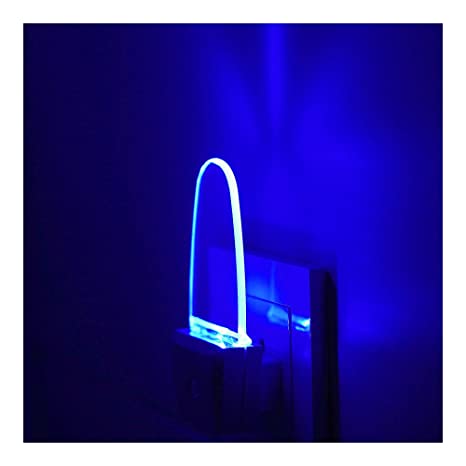Highway authorities have an important responsibility of providing safe roadway illumination within a state or local budget. Advances in LED highway lighting technology are providing an opportunity to not only produce the optimal lighting; but also, save energy in the process. The cost of high performance, high quality LED lighting will typically be recouped several times over a project’s lifespan due to energy savings and decreased maintenance material and labor costs.
Highway lighting plays a crucial role in ensuring safe and efficient transportation, especially during nighttime hours. With the advancement of LED (Light Emitting Diode) technology, highway lighting has undergone a significant transformation. LED highway lighting offers numerous advantages over traditional lighting solutions, providing enhanced visibility, energy efficiency, and reduced maintenance. In this comprehensive guide, we will delve into the needs of highway lighting, the advantages of LED technology, and key considerations for implementing LED highway lighting systems.
Understanding the Needs of Highway Lighting
Highway lighting serves multiple purposes, addressing critical needs related to safety, visibility, and driver comfort. Adequate lighting along highways enhances safety by improving visibility for drivers, allowing them to better detect potential hazards, pedestrians, and road signage. Well-lit highways reduce the risk of accidents and increase driver confidence during nighttime travel.
- Traffic Flow Management: Proper lighting along highways helps drivers navigate more effectively, especially in complex areas such as interchanges and intersections. Clear visibility aids in lane identification, traffic signal recognition, and overall traffic flow management, reducing congestion and enhancing efficiency.
- Crime Deterrence: Well-lit highways discourage criminal activities and provide a sense of security for drivers and pedestrians. Proper lighting helps deter theft, vandalism, and other unlawful activities, creating a safer environment for all road users.
Advantages of LED Highway Lighting
LED technology has revolutionized highway lighting, offering significant advantages over traditional lighting sources. Here are some key benefits of LED highway lighting:
- Energy Efficiency: LED highway lights are highly energy-efficient, consuming significantly less energy compared to conventional lighting technologies such as high-pressure sodium (HPS) or metal halide lamps. LEDs convert a larger proportion of electricity into visible light, minimizing energy waste and reducing electricity costs.
- Long Lifespan and Reduced Maintenance: LED highway lights have an extended lifespan, often exceeding 50,000 hours. This longevity translates to reduced maintenance efforts and costs associated with frequent bulb replacements. LED lights require less maintenance, contributing to fewer disruptions and cost savings over the lifetime of the lighting system.
- Enhanced Visibility and Uniform Illumination: LED highway lights provide excellent visibility due to their high-quality light output. They produce bright, white light that closely resembles natural daylight, improving driver perception and reducing eye fatigue. LED lights also offer better color rendering, enhancing the visibility of road signs and markings.
- Instant On/Off and Dimming Capabilities: LED highway lights have instant on/off functionality, allowing for immediate illumination without the need for warm-up time. This feature is particularly beneficial in situations where lighting needs to be activated quickly, such as during sudden weather changes or in response to traffic conditions. LED lights can also be easily dimmed, providing flexibility to adjust lighting levels based on specific requirements or to conserve energy during low-traffic periods.
- Environmental Impact: LED highway lighting is more environmentally friendly compared to traditional lighting options. LED lights consume less energy, resulting in reduced greenhouse gas emissions and a smaller carbon footprint. They also do not contain hazardous materials like mercury, making them safer for the environment and human health.
Key Considerations for Implementing LED Highway Lighting
When planning an LED highway lighting project, several factors need to be considered:
- Photometric Design: Proper photometric design ensures that LED lights are strategically placed to achieve uniform illumination and appropriate light levels along the highway. Careful consideration should be given to factors such as mounting height, spacing, and beam angles to ensure optimal visibility and minimize light pollution.
- Energy Efficiency Analysis: Conduct an energy efficiency analysis to determine the potential energy savings and return on investment (ROI) of implementing LED highway lighting. Consider factors such as electricity costs, maintenance savings, and expected lifespan to evaluate the long-term cost benefits of LED lighting.
- Light Distribution and Uniformity: LED highway lighting should aim for uniform light distribution to eliminate dark spots and ensure consistent illumination across the road surface. Proper distribution helps maintain visibility and enhances driver safety.
- Durability and Weather Resistance: LED highway lighting fixtures should be durable and capable of withstanding the rigors of outdoor environments, including temperature fluctuations, moisture, and wind. Look for fixtures with appropriate IP (Ingress Protection) ratings to ensure resistance to dust and water ingress.
- Intelligent Lighting Controls: Consider implementing intelligent lighting controls, such as motion sensors or adaptive lighting systems, to further optimize energy efficiency. These systems can adjust lighting levels based on traffic flow, time of day, or weather conditions, maximizing energy savings without compromising safety.
- Compliance with Lighting Standards: Ensure that the LED highway lighting system meets or exceeds relevant lighting standards and guidelines set by transportation authorities. Compliance ensures that the lighting system meets the necessary safety requirements and provides adequate visibility for drivers.
LED highway lighting offers a multitude of advantages for transportation infrastructure, promoting safety, energy efficiency, and sustainability. With their energy-saving capabilities, long lifespan, and superior visibility, LED lights have become the preferred choice for illuminating highways. When implementing LED highway lighting, careful consideration of photometric design, energy efficiency analysis, light distribution, durability, intelligent controls, and compliance with lighting standards is essential. By embracing LED technology for highway lighting, communities can enhance driver safety, reduce energy consumption, and create a more sustainable transportation infrastructure for a brighter and safer future.
How to Select LED Fixtures for Highway Lighting
Many factors contribute to selecting the LED fixture light distribution for a given roadway application. Lighting patterns ranging from a very thin oval pattern to near circular patterns are described as types I, II, III, IV, and V distributions. Medium width roadways (two to 4 lanes) is typically accomplished with Type III lighting and a pole placed near the outside roadside curb to distribute light at roughly forty degrees from the perpendicular centerline of the fixture. This pattern throws light approximately twice as wide, parallel to the road, as it throws it across the road perpendicularly. Other distributions are suitable for centerline placement, ramps, interchanges and other applications. LED high mast fixtures are available in all common distributions with custom options for many other patterns as needed.
One of the lighting objectives a designer is working to optimize is a continuous beam uniformity across extended roadway sections. Drivers experience less fatigue when lighting fluctuations are minimized – directly translating to a safer driving environment. Glare is another lighting condition that can quickly fatigue a driver. Careful pole placement and height can minimize dangerous glare conditions, but additional louvers, visors or shields are often necessary to take care of conditions where opposing roadways, or ramps catch a light glare that needs to be eliminated. LED has a full range of shields with IES photometric files available for analysis as needed.
High quality LED lighting approaches 60% more efficient than a comparable metal halide fixture. For instance a LED 1000 Watt high mast fixture can replace a 2500 W MH fixture. In just that 10-yr period, a single 1000W LED fixture should save $8500 in energy costs (assumes national avg 13¢/KWH, 12 hr/night use) vs. a comparable metal halide lamp. Relamping labor and material costs during this same 10-yr period could exceed $500 , bringing the total cost of ownership difference to a $9000 savings per 1000W LED fixture in a 10-yr period. Compare this to the first cost of perhaps $2000 more for the same LED fixture and it still comes out to $7000 per fixture cost savings!
Energy cost can be further reduced by using controls that can dim or cut out lights that are not needed due to time of day, traffic levels, local events or weather conditions. For extra critical areas such as on/off exchanges and toll areas, redundant or back-up lights can be available to switch on if a failure does occur. For instance, back-up lighting could be powered by generators that automatically start on a power failure. Supplemental solar or wind power can provide a majority of the power by charging during the day and running an AC inverter most of the night for the lighting. Use of the AC line power can take over and build charge as needed so the system can be optimally designed for average vs worst case.







